Ergon SR Allroad Core Comp Men Review - a gravel saddle that smooths rough roads
An affordable, comfortable saddle offered in two different widths
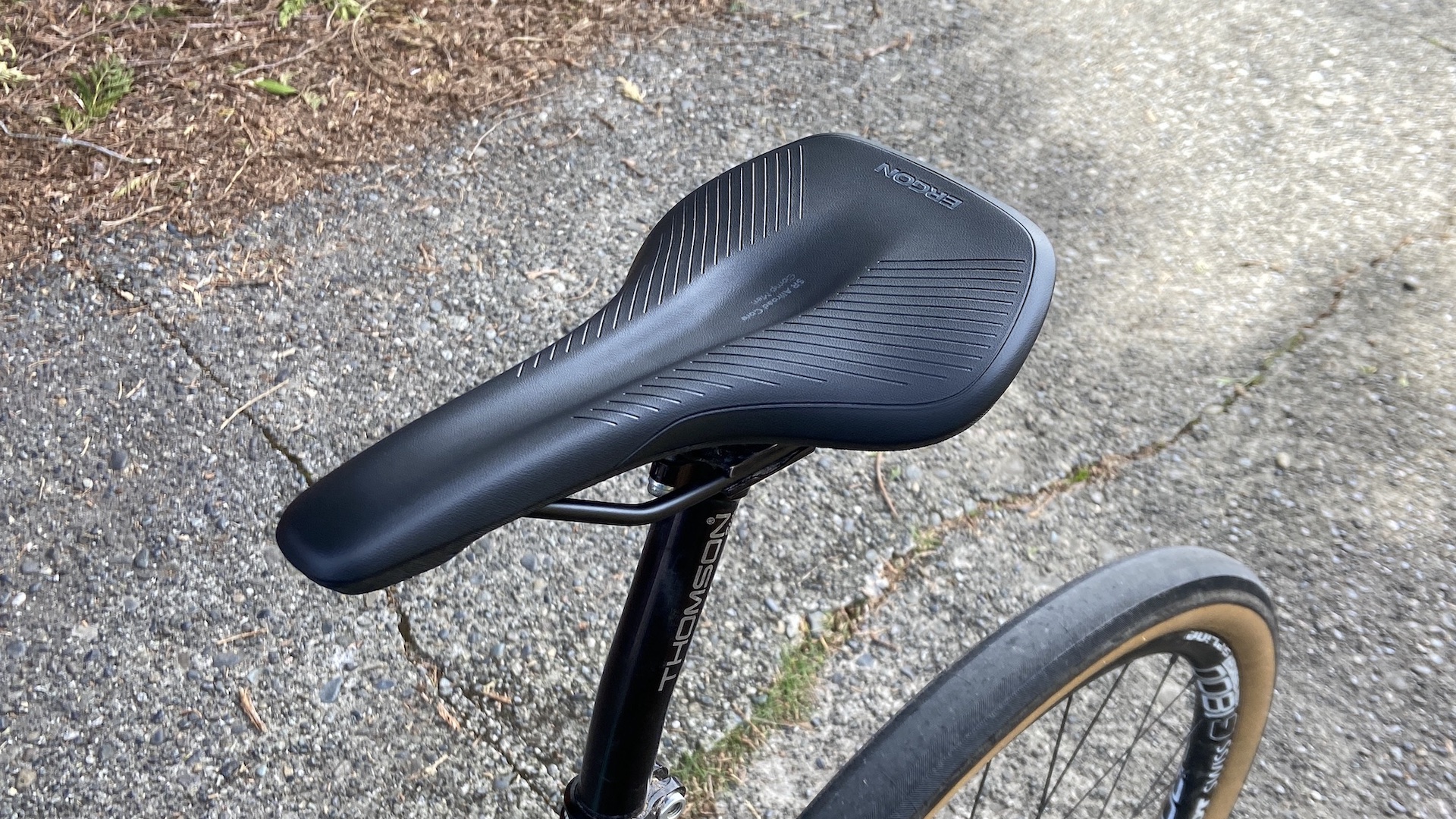
The Ergon SR Allroad Core is another option for those looking to add comfort to their bicycles, at a very reasonable price and without a significant weight penalty.
-
+
Comfortable
-
+
Multiple size options
-
+
Multiple price points
-
-
Somewhat heavy
-
-
Only available in men’s option
- -
You can trust Cycling Weekly.

Historically, the general approach to bicycle saddles has been more foam = more comfort and less foam = more speed. Width was seen in much the same way: wider = slower and narrower = faster. This near-Manichean binary persisted for a long time.
We now know that it’s not quite that simple: everybody is different and has different needs based on their unique anatomy. Germany’s Ergon Bikes has quietly been on the forefront of changing that mindset since the early 2000s, when they released their first product, an ergonomically-designed handlebar grip. Their first saddle came out in 2011, featuring a design that was based on scientific research and firmly grounded in anatomy and physiology. They have continued to innovate with ergonomically-forward designs ever since.
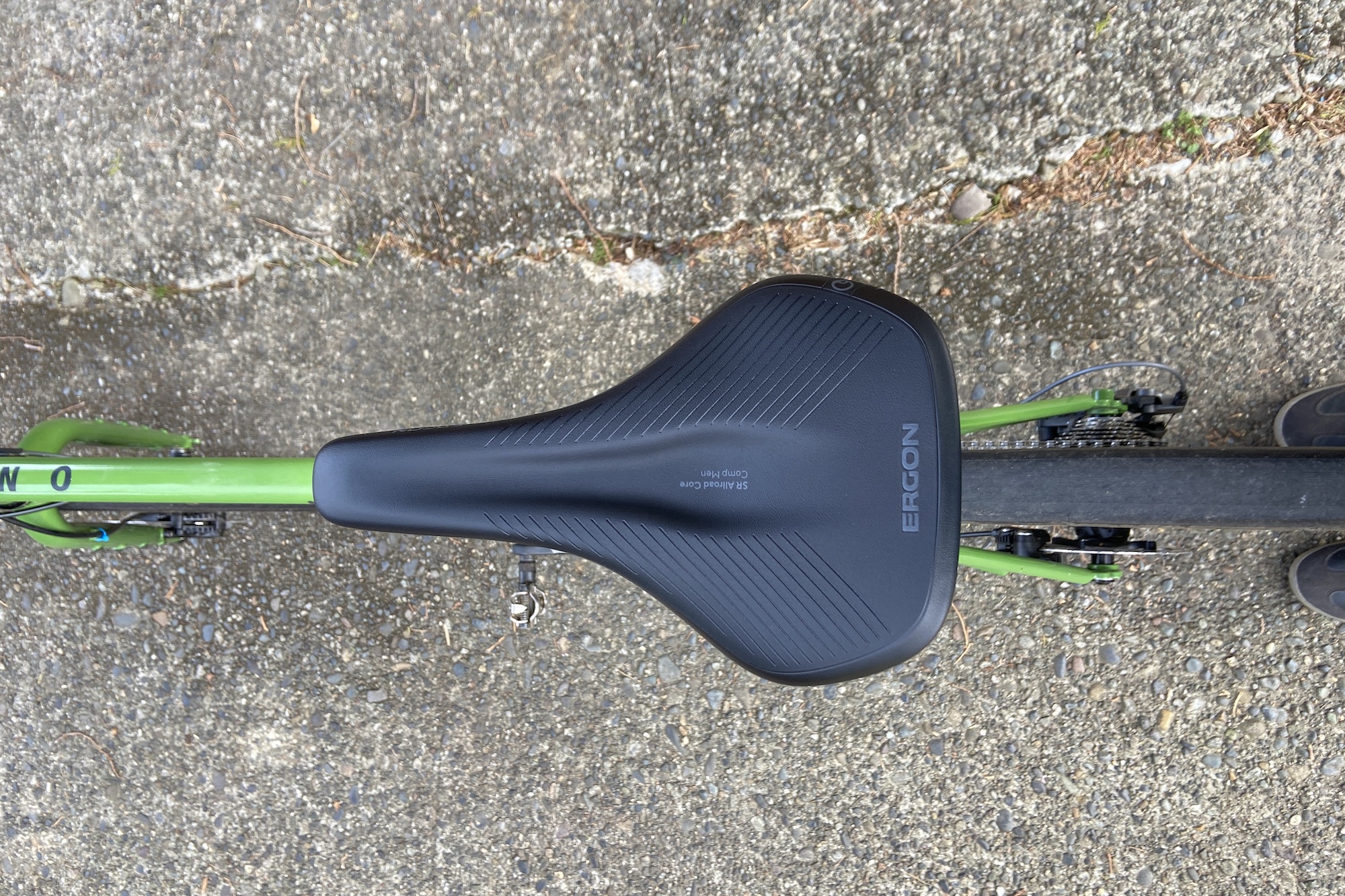
These days, it is common to see the best bike saddles from nearly all manufacturers offered in multiple widths and firmness levels, both for racing applications and recreational riding.
As well, saddle materials have continued to develop, most notably with the refinement of additive manufacturing techniques. Specialized and Fizik both have a range of 3D printed saddles currently available, and they’re not the only ones doing so. Ergon’s new line of saddles doesn’t use 3D printing, but instead a closed cell foam material called Infinergy®, developed by the European multinational chemical company, BASF.
Ergon SR Allroad Core Comp - the construction
The Ergon SR Allroad Core Comp Men’s saddle sandwiches a layer of closed cell particle foam (the aforementioned Infinergy®; basically it’s a very rebound-y material) between a top layer of orthopedic foam and a nylon composite shell. This is then covered by a microfiber outer layer. The intent here is to reduce road shock and vibrations felt by the rider, particularly on rougher surfaces, i.e. gravel.
The fit and design is based on Ergon’s other men’s saddles. It is available in two widths, S/M and M/L. The Comp model uses CroMo rails, while the other saddles in the line, the Pro and Carbon versions, save weight by replacing the nylon shell with a carbon one and using lighter rail materials.
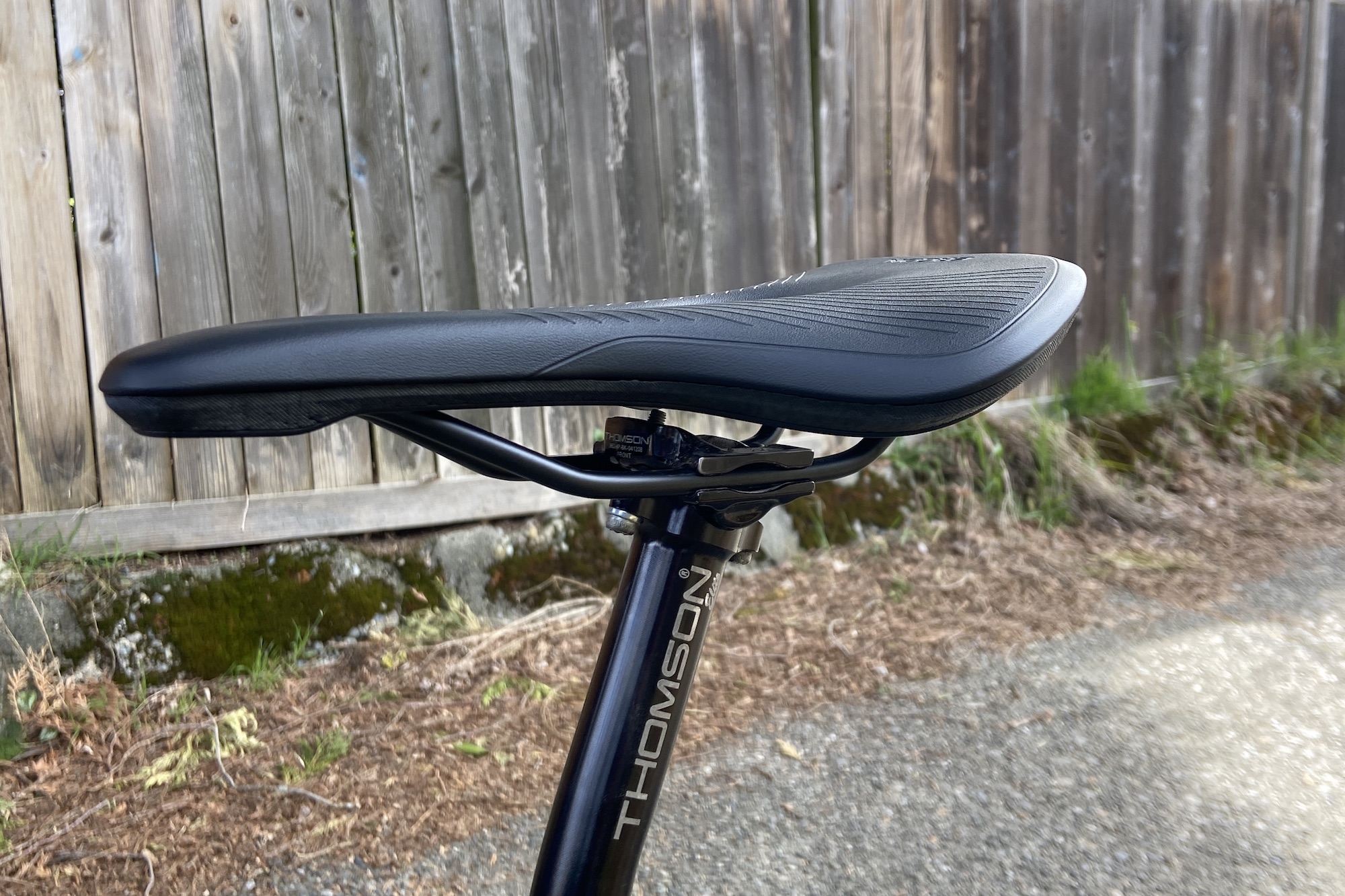
Like other Ergon saddles, the Allroad Core has a recessed center channel, but here they’ve wisely (given its intended usage) decided to close up the hole in the shell to prevent any debris from making its way between chamois and saddle.
The Infinergy® material layer is visible on the side of the saddle—it looks like the sole of a running shoe, which makes sense since that’s one of its other usages. Infinergy® is also used in a variety of other applications: damping in tennis rackets, making treadmills quieter, sports floorings like running tracks and playgrounds, as well as puncture proof bike and wheelchair tires. It can also be recycled.
Ergon SR Allroad Core Comp - the ride
I’ve been using different models of Ergon saddles for several years now upon the recommendation of a bike fitter who encouraged me to give them a try. I find that they perform very well for me, even compared to expensive 3D printed models. Since they’re not completely flat, getting the angle and setback right can take some trial and error.
I tend to be skeptical of suspension-type innovation in drop bar bikes (for the record, I am a fan of full-suspension mountain bikes) as it nearly always adds weight and complexity, not to mention cost. That said, if you do feel that suspension or at least comfort-enhancing means are necessary beyond optimizing your tires and pressure, then picking the simplest designs is best. Rigid seatposts with built in compliance, for example, can be very effective with little to no weight penalty.
This new Ergon saddle is in the same vein—it offers a simple alternative with a minimal weight penalty. The question is: does it work?
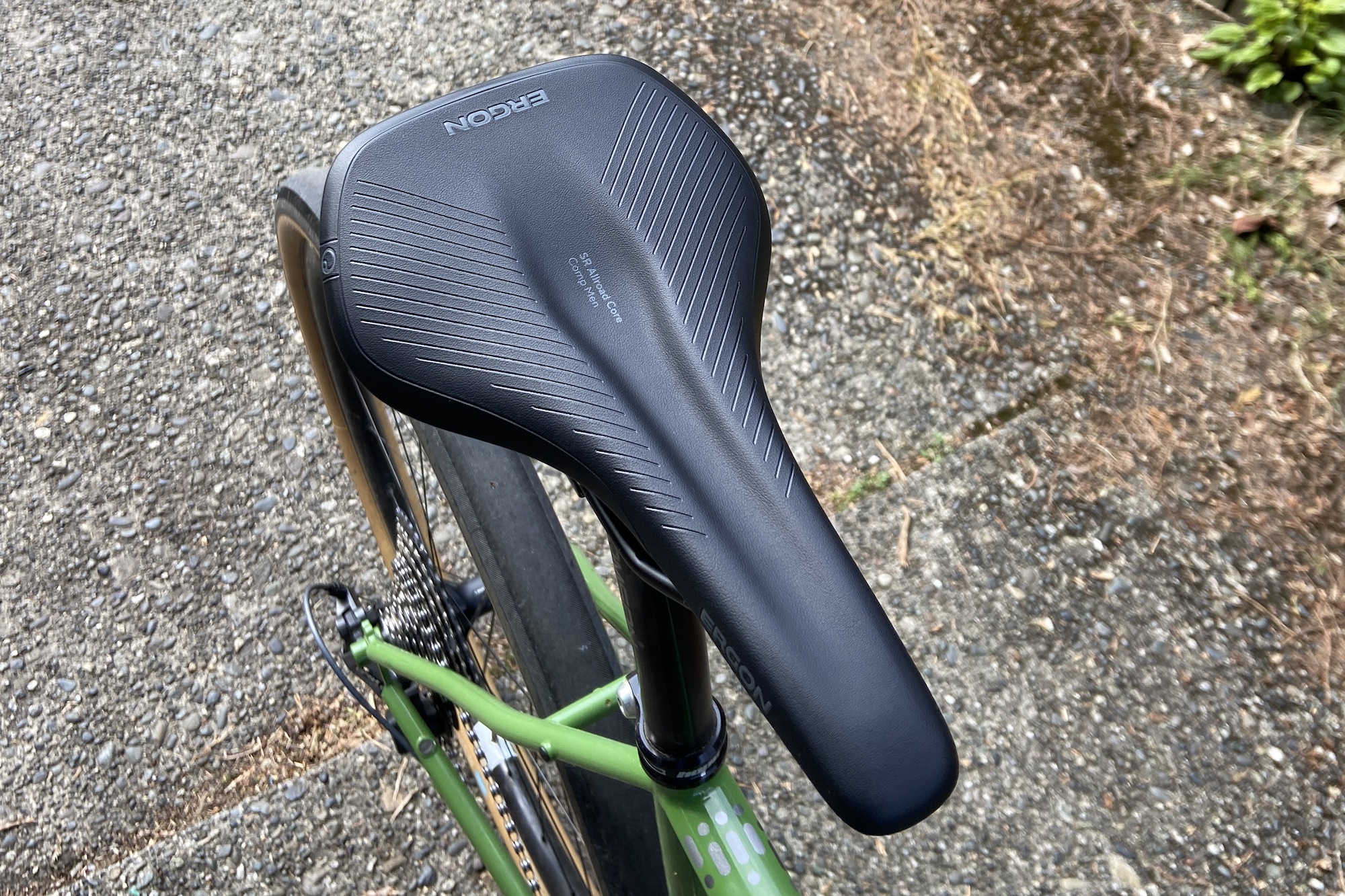
I had a hard time finding the answer. The shape, slightly different from Ergon’s SR series, is excellent. As for the shock-absorption, it exists, but is subtle. I first mounted it on my cyclocross bike, thinking I’d ride some bumpy stuff and see if I could feel it. I couldn’t. Fat tires at low pressure just make too big of a difference to notice the saddle’s damping characteristics.
I then switched it over to my road bike. Here, it was easier to isolate the saddle’s role in transmitting road vibration. While this is supposedly a “gravel” saddle, I think it might be better suited to skinny-tire riding. I run 30mm wide tires at 62 psi f/r on my road bike, which people seem to think is low. Despite this, I could feel a reduction in the amount of road buzz coming through the bike after switching saddles. It’s not massive though.
If where you live tends to have bumpy, broken up pavement, the Ergon Allroad Core offers a good option for smoothing out your ride. Setting aside the impact of Infinergy®, it’s just a very comfortable saddle that should fit a lot of people well given the multiple size options.
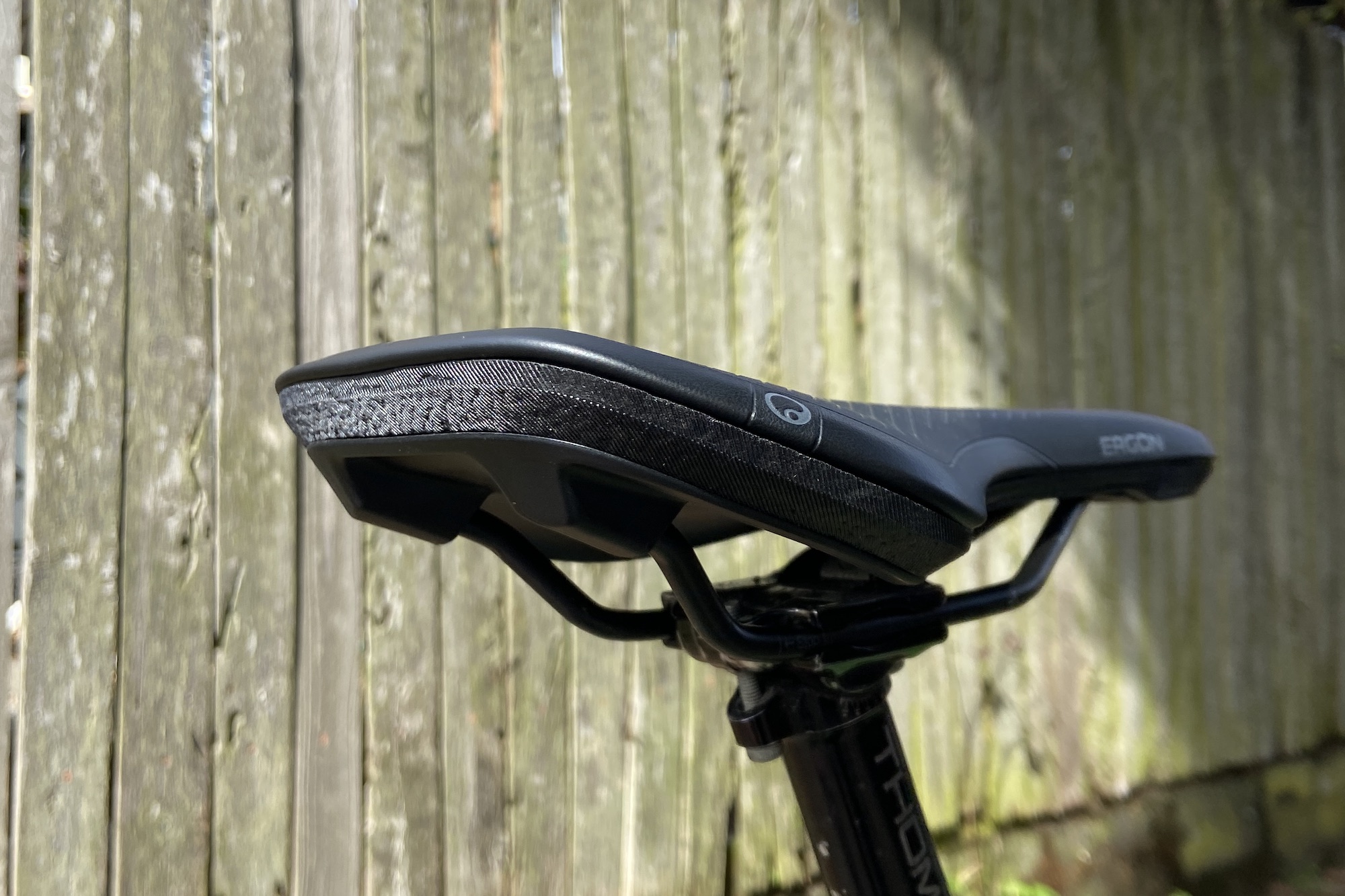
Value
Ergon has made it easy in terms of value by offering several different price points. The Comp model starts at a quite reasonable $140 / £129.99, while the Pro model goes up to $160 / £144.99 and the Carbon version tops out at $200 / £179.99.
I would be inclined to spend a little more to get the carbon shell and Ti rails of the Pro version versus the Comp, but the difference is indistinguishable while riding. It’s worth noting that the max weight limit of the Pro is slightly less at 100 kg vs 120 kg for the Comp.
To my knowledge, the only other company making bicycle saddles with Infinergy® is SQLab, also based in Germany, but their saddles are considerably more expensive at $220.
At the moment, Ergon only offers this technology in its line of men’s saddles, though hopefully that will change going forward.
To provide a comparison with a brand using 3D printed adaptive tech, Fizik's Antares Versus Evo model is offered with a range of rails, with the R3 model complete with Kium rails costing $/£259.99, while the non-adaptive R3 version retails at $149.99 / £144.99.
Specs
- Width: 139 mm (S/M) and 152 mm (M/L)
- Length: 262 mm
- Weight: 288 grams (M/L width)
- Rails: 7 x 7, round
- Price: $140
- Website: ergonbike.com

Thank you for reading 20 articles this month* Join now for unlimited access
Enjoy your first month for just £1 / $1 / €1
*Read 5 free articles per month without a subscription

Join now for unlimited access
Try first month for just £1 / $1 / €1
Get The Leadout Newsletter
The latest race content, interviews, features, reviews and expert buying guides, direct to your inbox!

Tyler Boucher is a former (and occasionally still) bike racer across several disciplines. These days, he spends most of his time in the saddle piloting his children around in a cargo bike. His writing has appeared in magazines published in Europe, the UK and North America. He lives in Seattle, Washington.
-
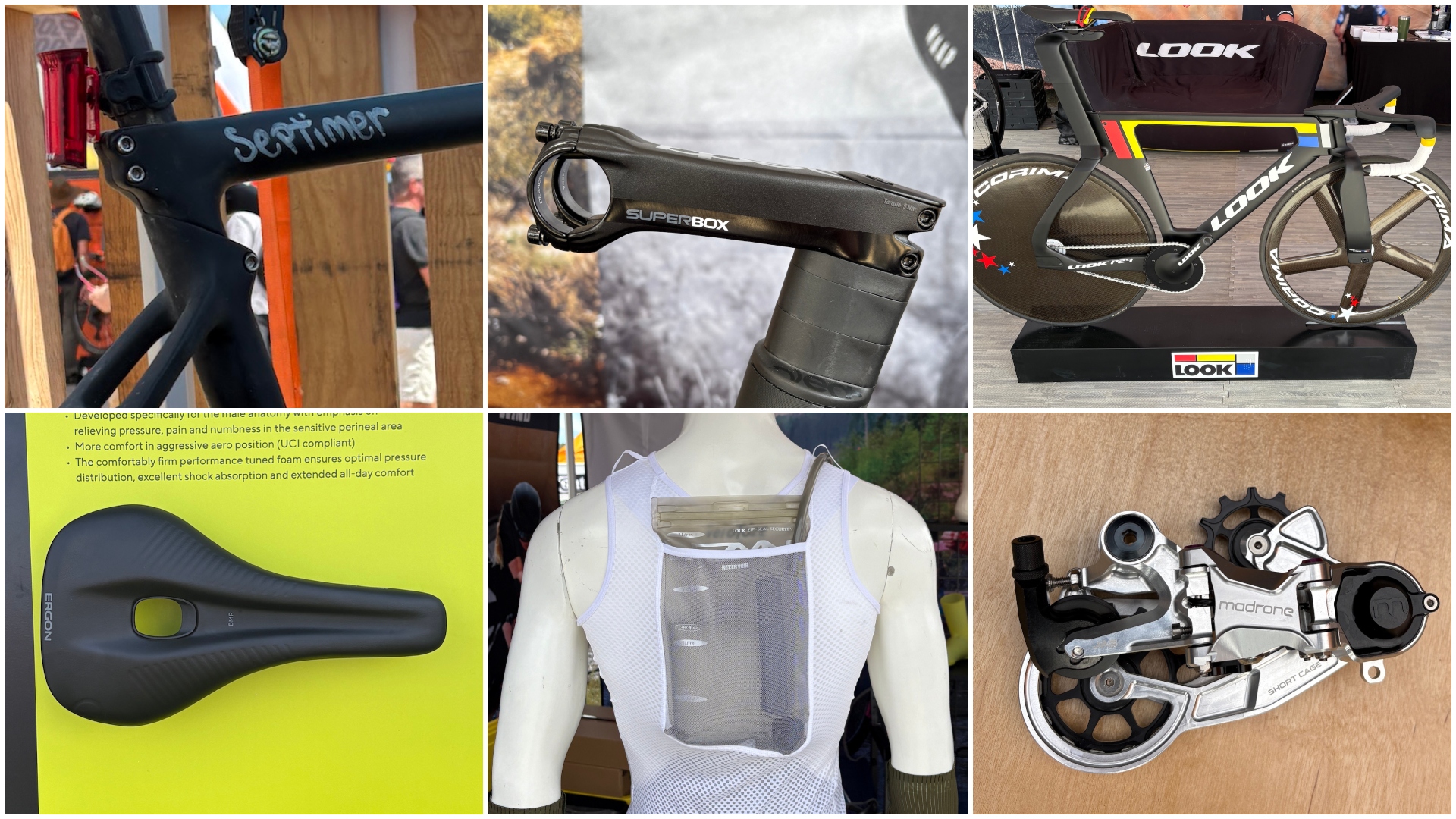 The Sea Otter Classic: sights and sounds from the biggest bike gathering in North America - Part 1
The Sea Otter Classic: sights and sounds from the biggest bike gathering in North America - Part 1Odds and ends that run the gamut, from a $13,000 frameset to armoured kit and new hydro-vests
By Tyler Boucher Published
-
 The thing that bothers me most when I look back at old school training is that right now we’re doing something equivalently misguided
The thing that bothers me most when I look back at old school training is that right now we’re doing something equivalently misguidedOur columnist's old training diaries reveal old-school levels of lunacy
By Michael Hutchinson Published
-
 'This race is absolutely disgusting': Peloton reacts to another brutal Paris-Roubaix Femmes
'This race is absolutely disgusting': Peloton reacts to another brutal Paris-Roubaix FemmesNow in its fifth edition, Paris-Roubaix Femmes is still a tough race, even for the best bike riders in the world
By Adam Becket Published